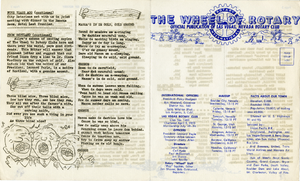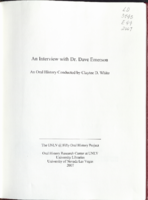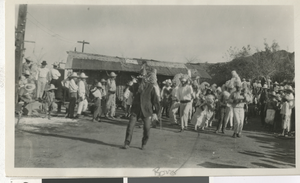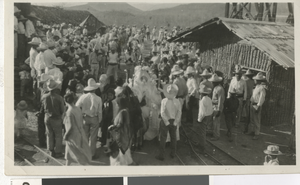Search the Special Collections and Archives Portal
Search Results

The Wheel of Rotary Las Vegas Rotary Club newsletter, October 6, 1949
Date
Archival Collection
Description
Text

Transcript of interview with Dr. David Emerson by Claytee D. White, December 21, 2005
Date
Archival Collection
Description
Text
Tom Hawley Papers
Identifier
Abstract
The Tom Hawley Papers (approximately 1955-2019) contain the personal papers of Las Vegas, Nevada based traffic and transportation reporter, Tom Hawley. The collection primarily includes physical and digital materials that represent Hawley's interests in Las Vegas history; transportation issues in the Las Vegas Valley, including the Las Vegas Monorail and Resort Corridor Project; and his work as a traffic and transportation reporter for KSNV Channel 3. Materials from KSNV include video clips and transcripts of
Archival Collection
Art Wolf Professional Papers
Identifier
Abstract
The Art Wolf Professional Papers (1988-2018) document the career of museum professional and consultant Art Wolf who specialized in supporting cultural heritage of indigenous communities, particularly in the Southwest and Las Vegas, Nevada. Materials document Wolf's work with the American Alliance of Museums (AAM) as a board member, in conference planning, and as a Study Leader for Smithsonian Associates Study Tours. Also included are materials that represent Wolf's involvement as an alumni of the Leadership Las Vegas program and director of the Nevada State Museum. The collection includes some ephemera and invitations to different events held in Las Vegas, Nevada that Wolf was invited to. The collection also includes examples of unsuccessful bids for consultancy jobs through WOLF Consulting and his files as a master's thesis adviser for the Museum Studies program at Harvard Extension School.
Archival Collection
Denver, John
John Denver (1943-1997) was a popular country-folk singer-songwriter of the 1970s and was also known for his work as an actor, activist, and humanitarian. His popularity brought him to many different places including the Harrah’s Lake Tahoe property, where he performed along the likes of Frank Sinatra and hosted events like the Celebrity Ski Classics.
Person
Lynch, Rosemary, 1917-2011
Alternate Names
Sister Rosemary Lynch was a Catholic nun, teacher, and social activist who advocated for world peace, disarmament, and an end to the testing and use of nuclear weapons.
Person

Photograph of performers at a festival, (Mex.), 1900-1920
Date
Archival Collection
Description
Image

Photograph of festival dancers, (Mex.), 1900-1920
Date
Archival Collection
Description
Image
